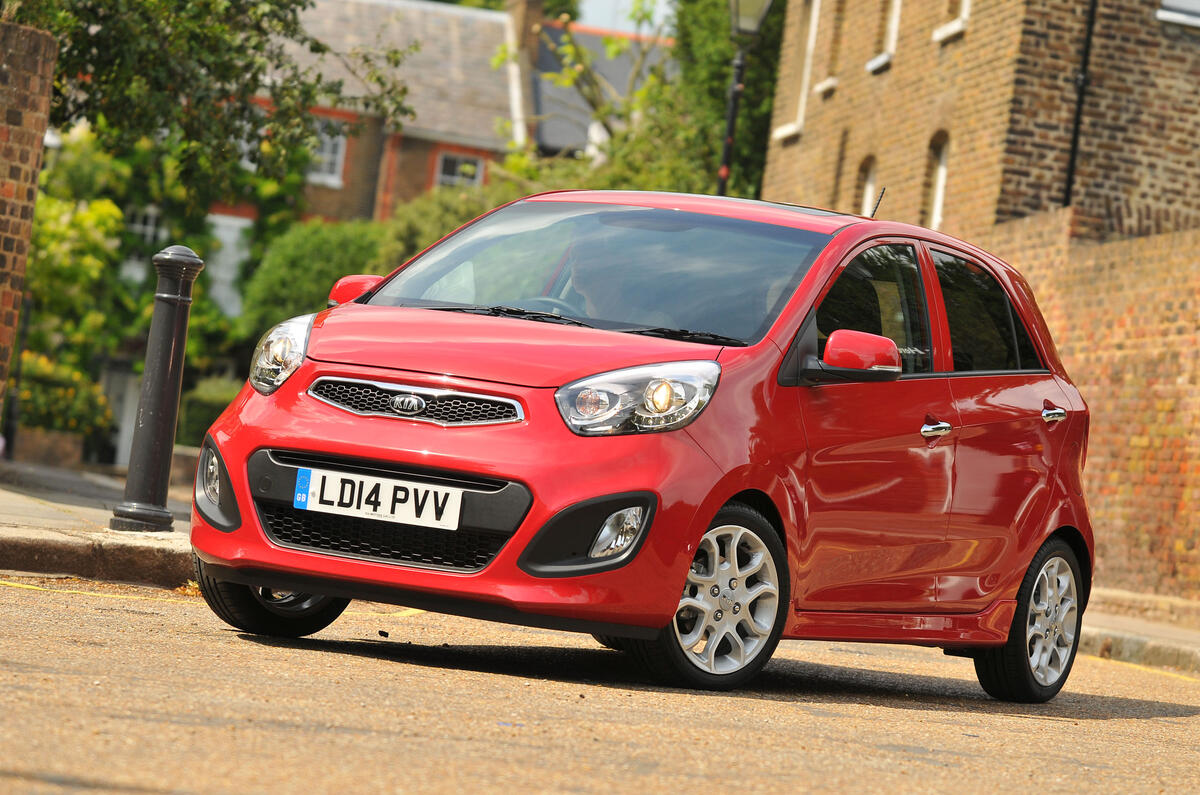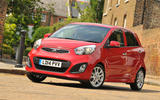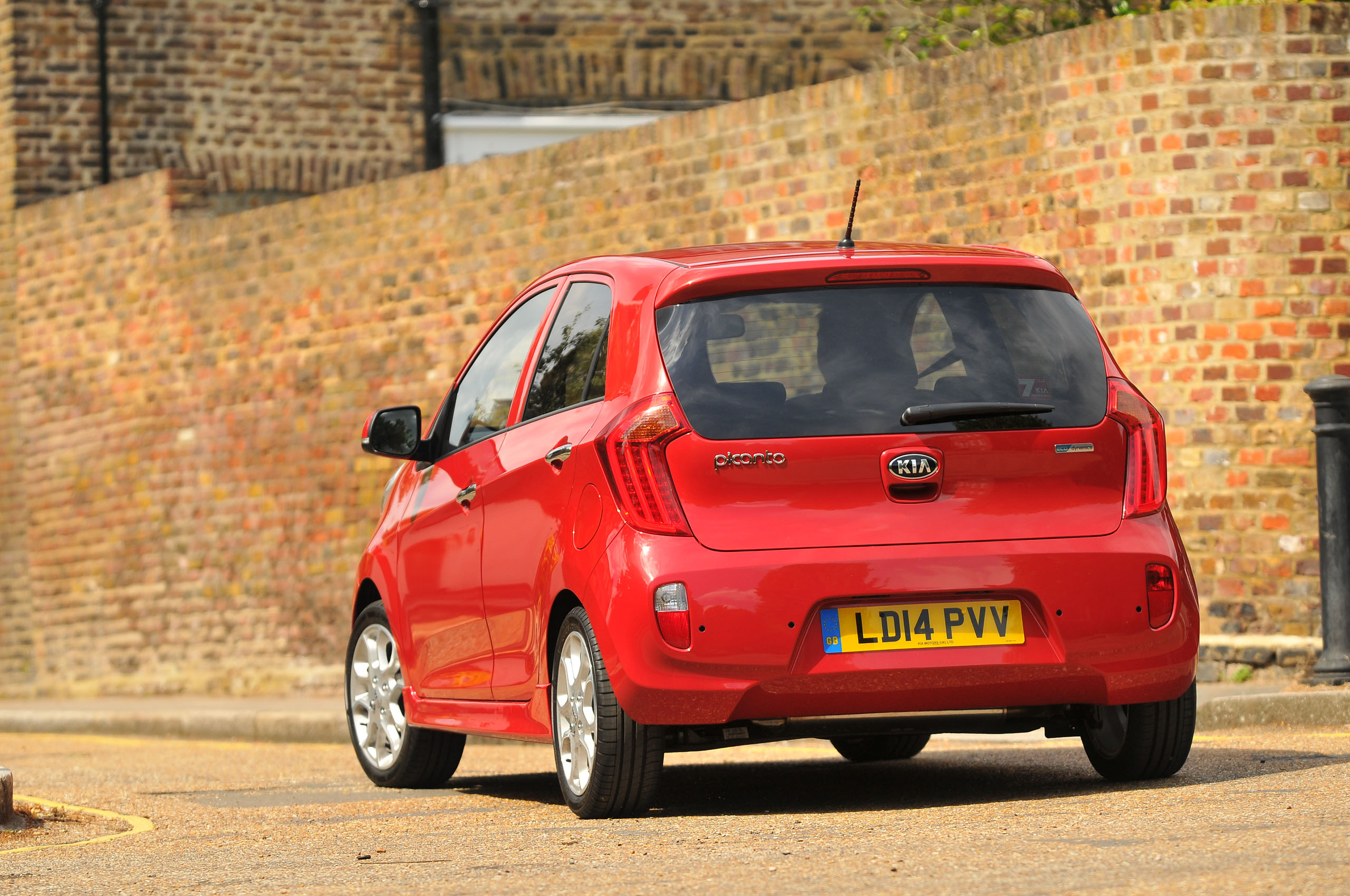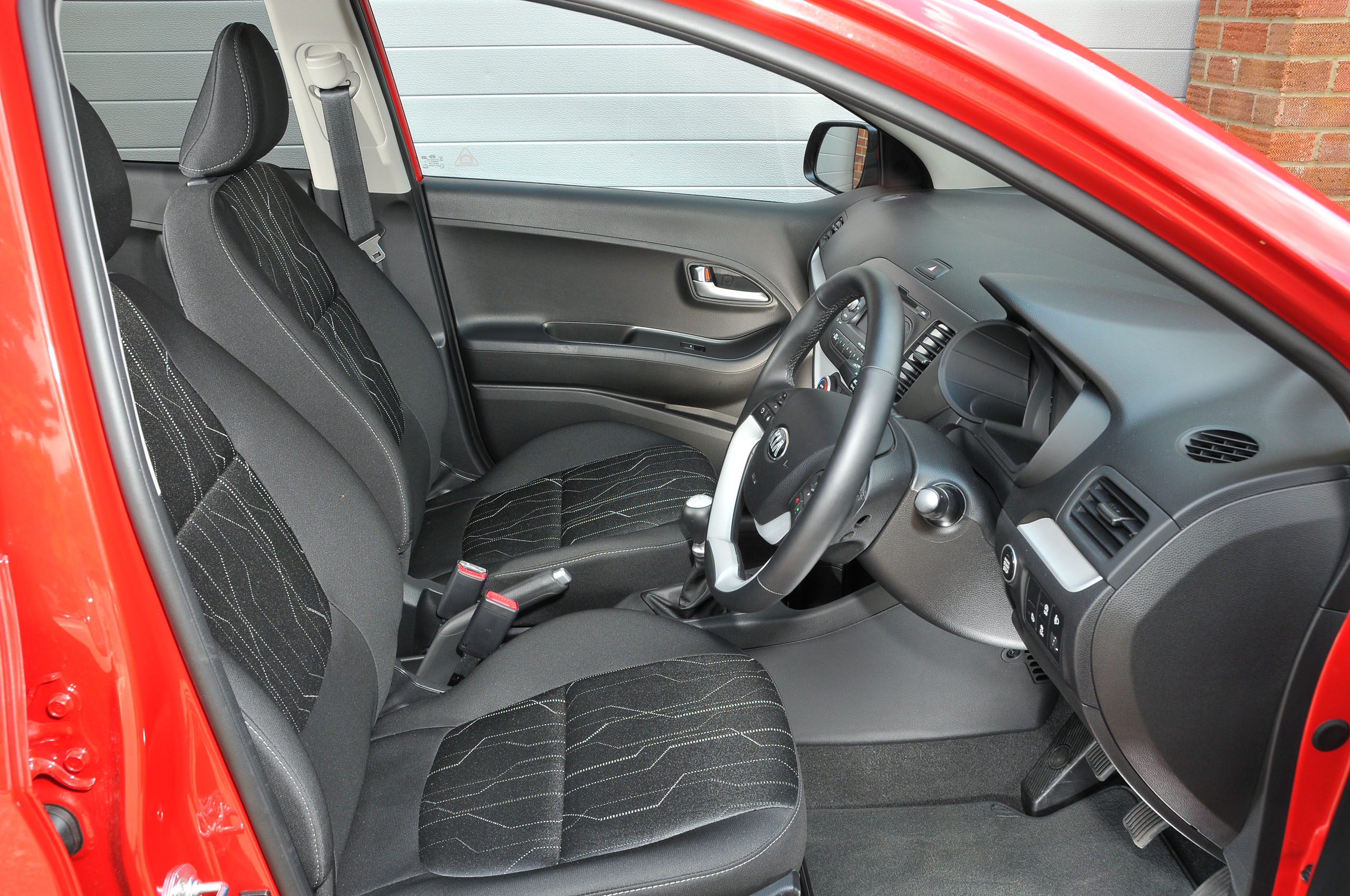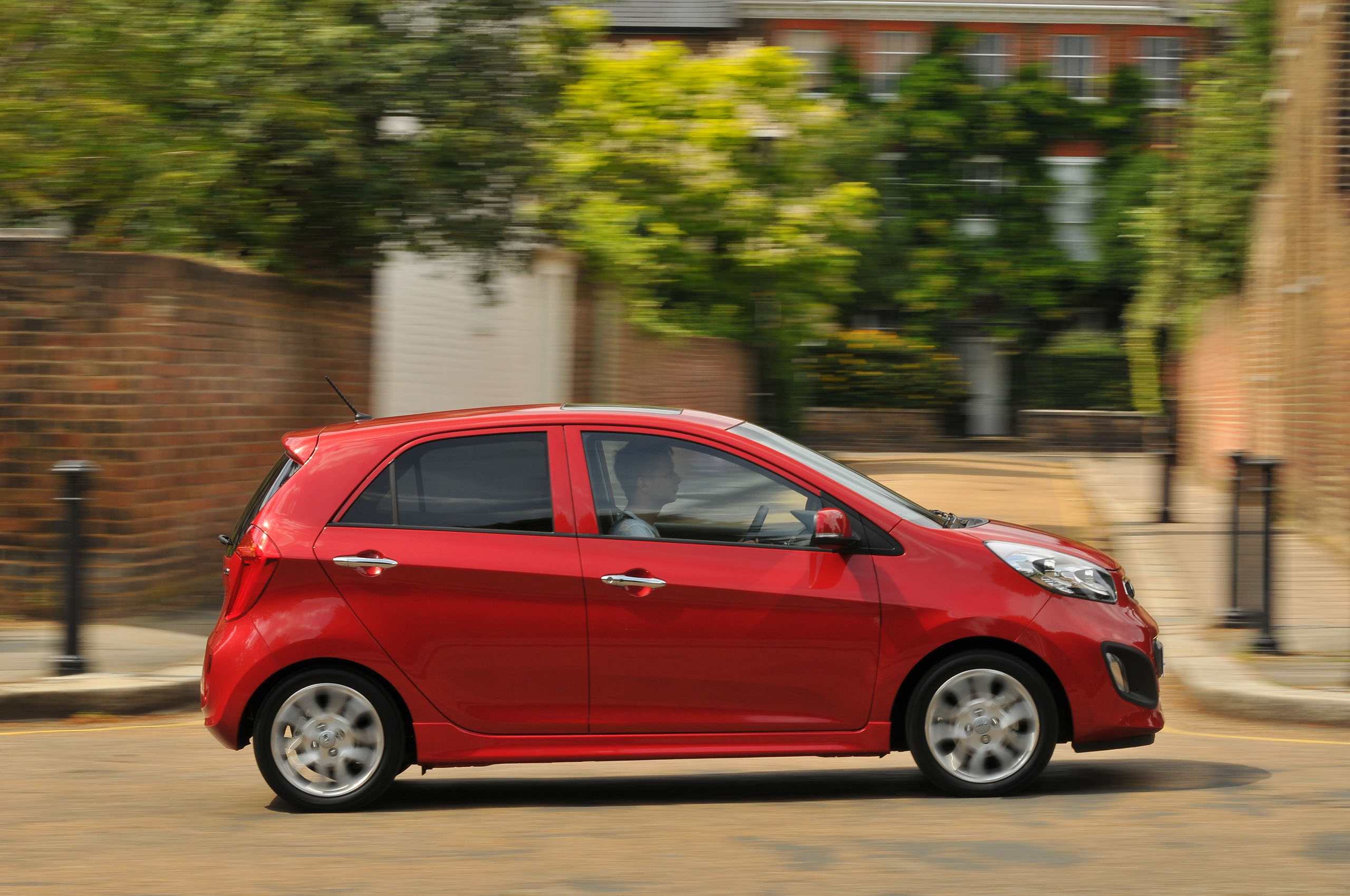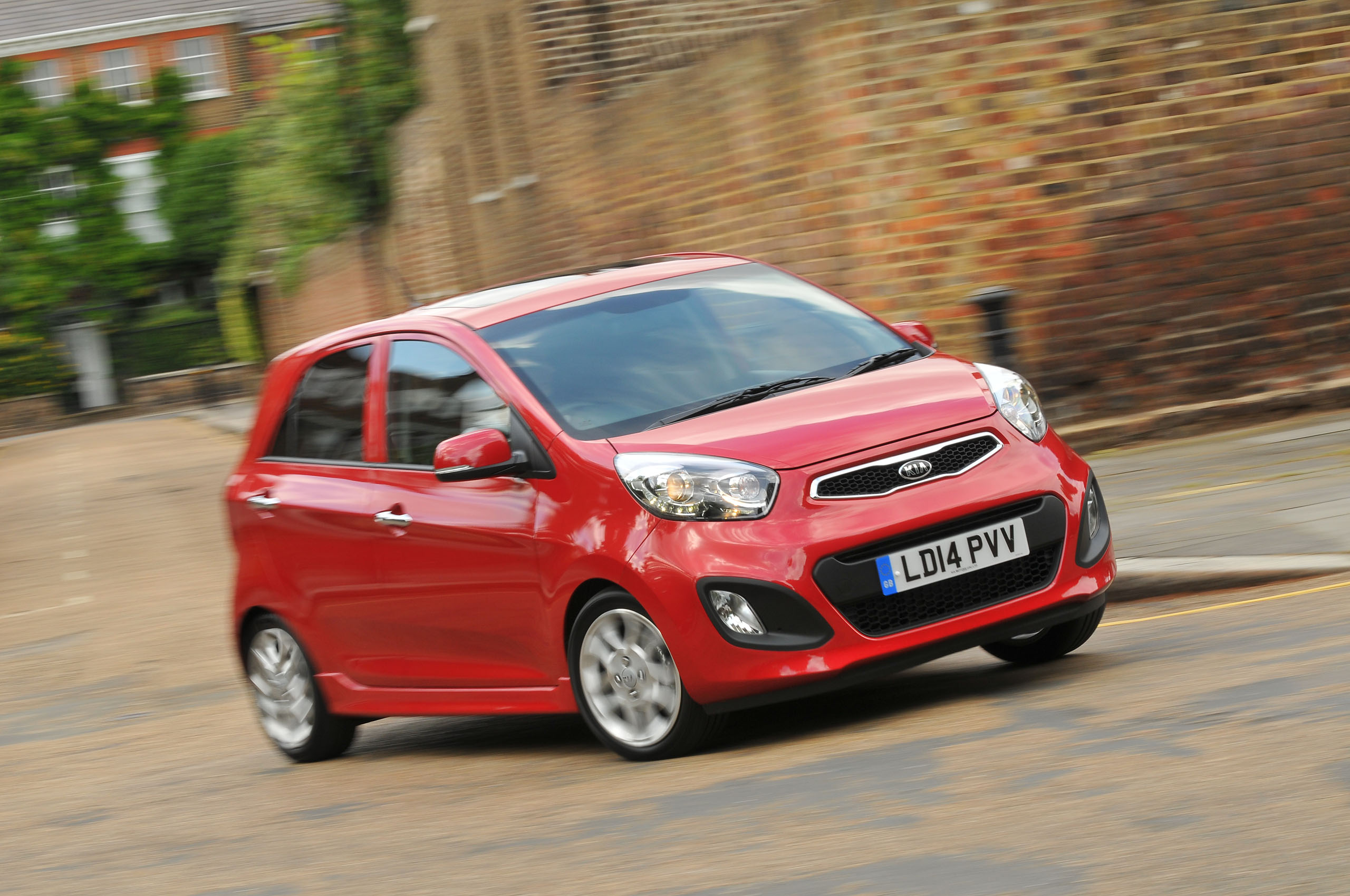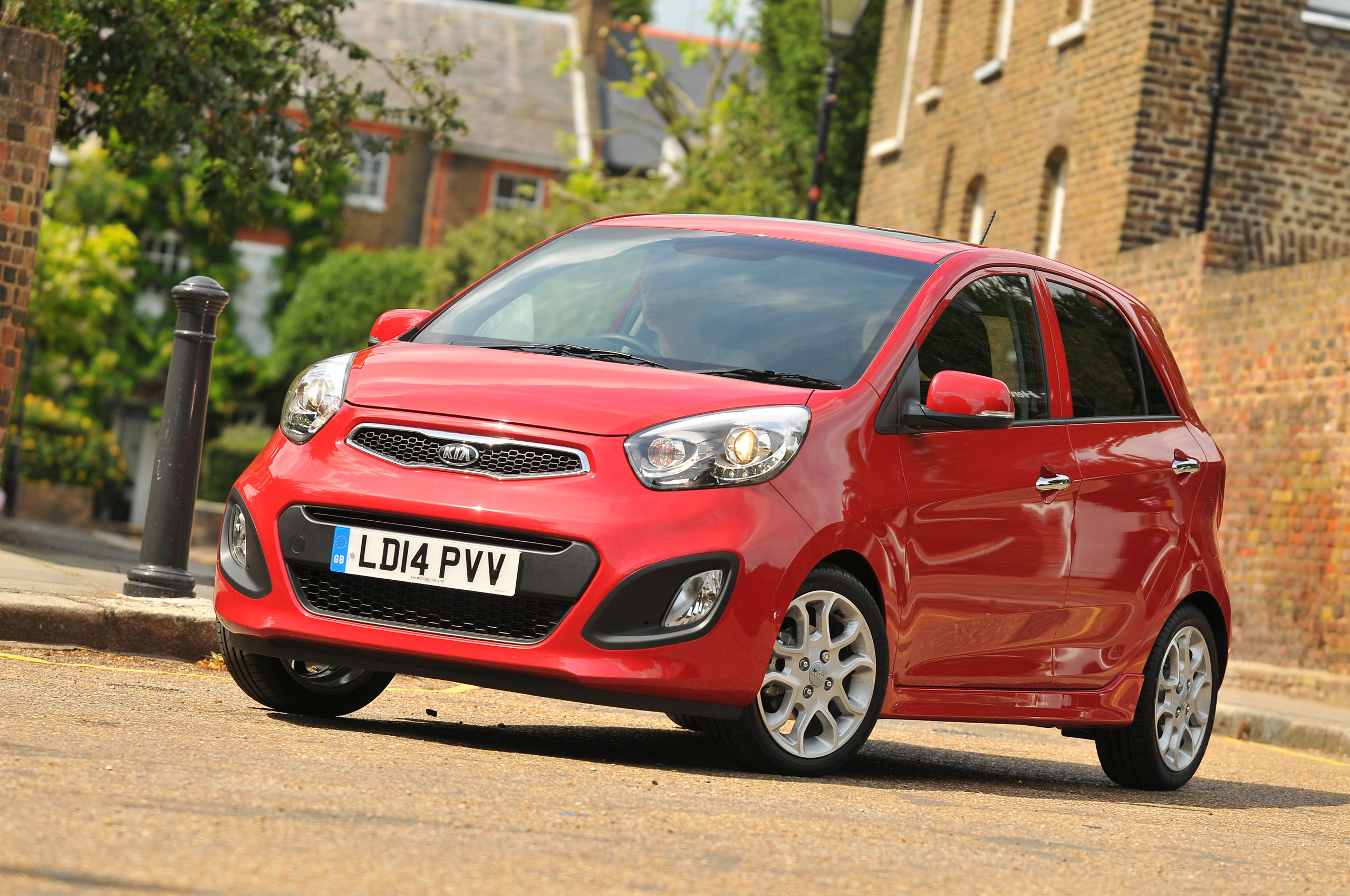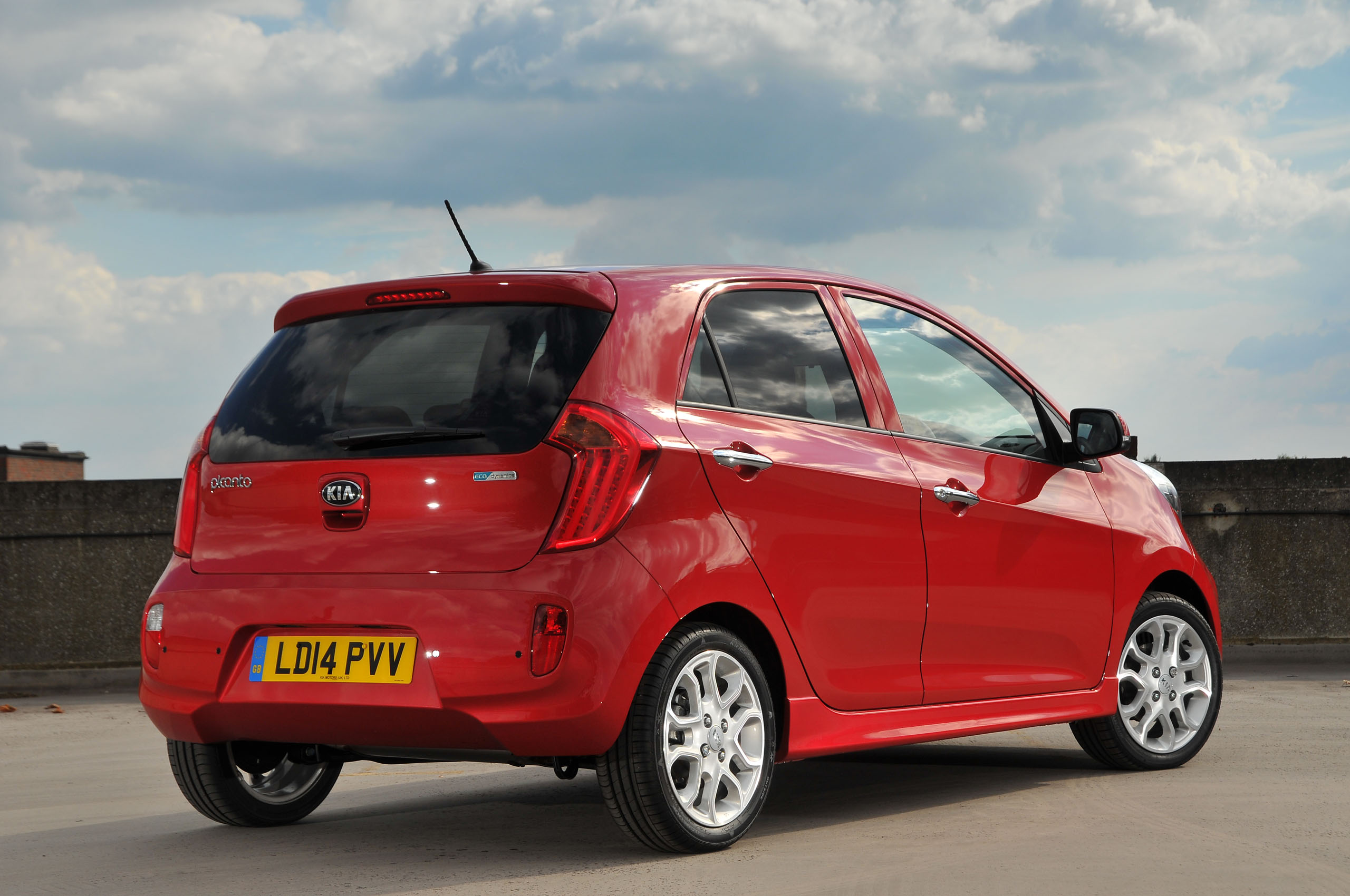Step inside the Picanto and there are a couple of things you’ll note straight away. First is the silvered highlight of the steering wheel – a big, gaping mouth that could become a Kia styling trademark but we rather hope it does not.
Second, and particularly if you’re familiar with the old Picanto, is a sense of much-improved material quality and fit and finish. Yes, you can see areas where costs have been cut. Nearly everywhere. But the material choices are, at worst, entirely consistent with the class and, in places, better. You’ll be searching a long while for soft-feel plastics, but you won’t be disappointed by any overtly brittle finishes.
Switchgear is light but positive, as are the major controls, and ergonomics are sound. In keeping with most cars in this class, there isn’t a legion of switchgear to navigate, but what buttons it has are properly located and operate as they should.
The cabin is respectably spacious. Like the Hyundai i10, the Picanto encourages its driver into a relatively upright position – think kitchen chair rather than sofa. This gives good visibility and allows for more cabin space within a given interior length (although it’s not as tall as the i10). As a result, it’s possible to fit two average-sized adult passengers in the rear.
A modern 3.6m-long car is never going to be overly capacious, but it is fine for shorter journeys and leagues better than, say, the Peugeot 108 and its sister models. It’s also easier to reach in and out of the back seats of the Picanto than it is in the likes of the 108 or Citroën Citroen C1 – worth remembering if you’re trying to place a small child back there.
The boot is a useful size and shape, too. Even with the split and folding back seats upright and in place, it has a respectable capacity of 200 litres.
As for trims, there are only thee to choose from, which makes choosing simple. So is the engine choice with only two to choose from - you are limited to the small 65bhp 1.0-litre unit on the 1 Air model, while the more powerful 1.25-litre engine is the only choice if you pick the range-topping Sport Picanto.
The 1 Air models include 14in steel wheels, front electric windows, hill start assist, stability control and ABS as standard on the outside, while inside you will find air conditioning, Bluetooth and USB connectivity, remote central locking and a trip computer.
Upgrade to SE and your Picanto will be adorned with climate control, heated wing mirrors, rear parking sensors, automatic headlights and privacy glass, and if you are keen to part with more money and opt for the Sport trim, you will gain 15in alloy wheels, a twin exhaust system, cruise control, faux leather upholstery, and Kia's 7in touchscreen infotainment system complete with sat nav and a reversing camera.



